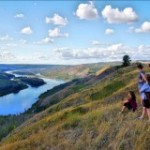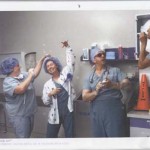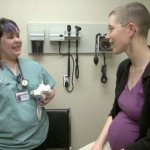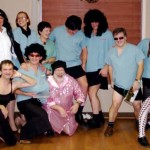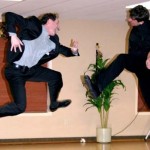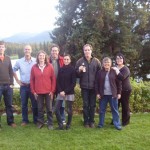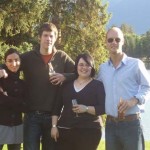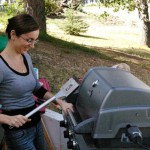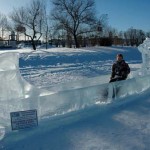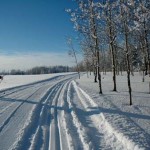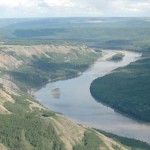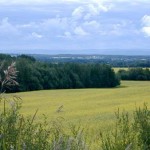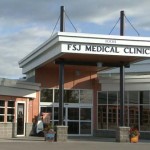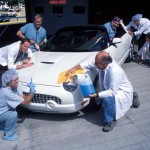Site Director Message
Over the last decade, the trend in medical education has been towards decentralized and more generalized teaching. The vision of the Rural Fort St. John Site (in its tenth year) of the UBC Family Practice Residency Program is to offer high quality medical education in rural communities providing a broad spectrum of general and specialist medical care. The majority of this general and specialist care is provided by family practitioners; thus, the Rural Fort St. John Site provides the opportunity to learn “cradle to grave” care in a truly “full service general practice” environment.
The North East Health Services Delivery Area (NEHSDA) provides health care to a population of approximately 70,000 in the North East of British Columbia, with the two largest communities of Dawson Creek and Fort St. John accounting for the bulk of the care. The NEHSDA provide per annum 91,000 ER visits, 900 deliveries, 35, 000 inpatient days, and 5000 surgeries. There are over 60 physicians working in the North East providing these services. The residency program is based in the community of Fort St. John for the majority of the time. A large catchment area including other communities in the region (Dawson Creek, Chetwynd, Tumbler Ridge) makes our site very busy with a large exposure to a variety of patient cases and demographics.
Residents coming to the Rural Fort St. John Site will have unique access to clinical experience and teaching. The site is best suited to the highly self-motivated resident who is interested in directing his or her own teaching. You will be part of a formal academic program within a well-established clinical service community. If you are interested in a fantastic opportunity with a high focus on the academics of Family Medicine, community contribution, and balanced healthy living, then you should strongly consider choosing the Rural Fort St. John Site for your family medicine residency. Because of their locations, the communities of the region offer a range of outdoor and cultural activities including hiking, cross-country and downhill skiing, sledding, horseback riding, hunting, boating (lake and river) and fishing. Many indoor sports are available: swimming, soccer, gymnastics, archery, ice hockey, speed skating, curling, squash, and martial arts. There are a number of arts groups in each community: choirs, bands, theatre companies, a potter’s guild, as well as visiting performing artists. A vehicle is required as public transit does not accommodate after hours. You can also take advantage of some of the student loan forgiveness programs available for health care professionals which includes residents working in remote underserved communities — more information is listed in the FAQ.
Dr. Courtney Boyer, Co-Site Director Rural Fort St John boyer.courtney@gmail.com
Dr. Hannah Galeazzi, Co-Site Director Rural Fort St John hannahgaleazzi@gmail.com
Lead Resident Message
Welcome to Fort St. John! We are a city with population of 21,000 with a regional population of 70,000. Our program is ideal for those looking to practice broad scoped rural practice in the future. Our 20+ local family physicians manage inpatients, assist in the operating room, provide obstetrics services, work in the emergency departments, provide anesthetics, and many have special interests in certain populations.
Training is provided primarily at the Fort St John site, with residents traveling for palliative care and other electives. Academic half day is split between local sessions, video conferenced lectures with the Prince George site, and hands-on experiences such as simulation labs. We have local specialists (pediatrics, obs/gyn, surgery, internal medicine, psychiatry) and family physicians with advanced skills who are all keen to teach.
While we do have a traditional block system for our core rotations, your overall clinical exposure will be very longitudinal. This is best shown in our call, which is hospital wide independent of which rotation you are on.
With a smaller medical community, comes a very different experience as a learner. You will know all the staff by first name, and they will know yours. Staff members will advocate for your learning goals and take interest in who you are here. Respect flows both ways much more readily when you are not just another resident. Between staff taking you river boating on the Halfway, kayaking on Charlie Lake, skiing at their cabin at Powder King, hiking in the Peace hills, and golfing on the local greens, you will likely find yourself quite comfortable in our medical community.
Resident lead sessions on skills like ultrasound and surgical techniques are commonplace. Early tailoring of your learning, especially to special interests like obstetrics, GP-emergency, and GP-anesthesia, is very easy to do in this program, which allows flexibility for learners to pursue their personal goals. If you are a self-motivated learner keen to be an active part of shaping your own residency experience, this program is for you.
Dr. Sairvan Fernandes, Site Lead Resident Rural Fort St John
Number of Residents: 2 CMG, 2 IMG
Location: Fort St. John, BC
Community: 21,000
Hospital: FSJGH
Distance from Vancouver: 1,395 km
Curriculum Type: Integrated
R2 Elective Time: 20 plus 4 weeks Rural in a smaller community in the region
Phone: 250-261-7583
Contacts: Site Co-Director- Dr. Courtney Boyer boyer.courtney@gmail.com and Dr. Hannah Galeazzi hannahgaleazzi@gmail.com
/ Coordinator – Kim Furlong
Lead Resident: Dr. Sairvan Fernandes
Program Highlights
Introduction
The North East Health Services Delivery Area (NEHSDA) provides health care to a population of approximately 70,000 in the North East of British Columbia, with the two largest communities of Dawson Creek and Fort St. John accounting for the bulk of the care. The NEHSDA provide per annum 91,000 ER visits, 900 deliveries, 35, 000 inpatient days, and 5000 surgeries. There are over 60 physicians working in the North East providing these services. The residency program is based in the community of Fort St. John for the majority of the time, however travel to the other communities in the region (Dawson Creek, Chetwynd and Tumbler Ridge) is required for some clinical experiences, so a vehicle is required.
Purpose
The vision of the Rural Fort St. John Family Practice Residency Site is to offer high-quality medical education in a rural community providing a broad spectrum of general and specialist medical care. The majority of this general and specialist care is provided by family practitioners, thus this site provides the opportunity to learn in a truly generalist, broad-based milieu, grounded in the three principles of the Triple C Curriculum: Comprehensive, focused on Continuity and Centered in Family Medicine.
Our Mission is to provide a community-based postgraduate family practice residency program and undergraduate family medicine education in a regional centre affiliated with UBC, the Northern Medical Program, and the Northern Health Authority. This site will assist learners, enhance the professional environment for the faculty and staff, and improve the health care of North East BC citizens.
Program Objectives
-
- The Rural Fort St. John Site will provide a northern BC residency program that is designed as an integrated 24-month competency based curriculum.
- The learning environment will be focused on family practice problem solving skills and based on principles of effective adult education.
- The residents will be part of a community network of health care providers and will become skilled at collaborating as team members and team leaders.
- The graduating residents will have expert knowledge of the wide range of common problems of patients in this community and of the less common but life-threatening and treatable emergencies in patients of all stages of the life cycle.
- The excellent training will be a cooperative venture between the Department of Family Practice and this community-based training site.
- Family Medicine will be taught by family physicians whose philosophy and practice are consistent with the aims and aspirations of Family Medicine, as defined by the four principles.
First and Second Year Curriculum
This two-year program is designed to train physicians interested in practicing in rural Canada. However, the program also suits physicians interested in acquiring a broad skill set useful in any community. The curriculum has been created to maximize the integration of the hospital, the office and the community work of the doctor. The curriculum will provide longitudinal, integrated learning without true rotations but instead training will be organized into Domains of Care running parallel and integrated with other learning.
The first year curriculum consists of 2 blocks each of OB/GYNE, Emergency Medicine, Internal Medicine, General Surgery and 3 blocks of Family Practice with one block of Pallative Care and one block of Inpatient Psychiatry. While in the blocks you will still do half a day Family Practice every week or a full day two times a month.
The second year curriculum consists of 5 blocks of Elective time and one block in region in a smaller rural community. Examples for electives include non-mandatory rotations in inpatient paediatrics and ICU as well as a trauma elective in South Africa. The other 8 months would be at the Fort St John site spreading across other disciplines as per Individual learning plans with the last 4 months being part of the “Transition into Practice.”
To complement the required Domain experiences, visiting specialty services and local expertise is available in ENT, Ophthalmology, Orthopedics, Pediatrics, Family Practice Anesthesia, Cardiology, Geriatrics, Sports Medicine, Women’s Health, Palliative Care, Chronic Pain, Methadone Management and Travel Medicine, Dermatology and First Nation community clinics.
To complement the clinical experience, residents attend a mandatory weekly half-day academic curriculum that includes family practice and specialty seminars, case presentations and workshops. These will be provided both locally in Fort St John and by electronic link between Fort St. John and distant sites as the case requires. Residents are also invited to attend all medical staff educational rounds. All residents are funded to attend the ALARM (Advances in Labour and Risk Management) course, ATLS (Advance Trauma Life Support) or equivalent (e.g. CARE: Comprehensive Approach to Rural Emergencies and the Essential Surgical Skills Course coordinated by the Kelowna Rural Program. Local education is provided in Emergency Department and Obstetrical Ultrasound.
Training Sites
Location
The communities of the northeast of BC offer a range of outdoor activities including cycling, hiking, tennis, golf, climbing, skiing, snowshoeing, cross-country skiing, snowmobiling, horseback riding, hunting, and fishing. Many indoor sports are available: swimming, soccer, gymnastics, archery, ice hockey, speed skating, curling, squash, and martial arts. There are a number of arts groups in the community: choirs, bands, dance, theatre companies, as well as visiting performing artists. Long-term commitment to the northeast BC rural community lifestyle is an important quality, and we encourage direct contact from interested qualified applicants.
Resources
The North East Health Services Delivery Area (NEHSDA) provides health care to a population of approx 70,000 in the northeast of British Columbia. The majority of this care is centered around the two largest communities of Dawson Creek and Fort St John but medical services are also provided in the smaller communities of Chetwynd, Tumbler Ridge, Hudson’s Hope and Fort Nelson. Dawson Creek, Fort St John, Fort Nelson and Chetwynd have community hospitals; Hudson’s Hope and Tumbler have diagnostic and treatment centres. These facilities provide, per annum 91,000 ER visits, 900 deliveries, 35,000 inpatient days, and 5000 surgeries. There are over 60 physicians working in the northeast of BC providing over 1000 services per day.
The family practice resident will be based in Fort St. John for the majority of their time, but will need to travel to other communities for some experiences so a vehicle is required. The program recognizes that winter travel in the north can be challenging, so a strength of the program is that most of the learning can be done while immersed in one community, and travel can be kept to a minimum.
Long-term commitment to the northeast BC rural community lifestyle is an important quality, and we encourage direct contact from interested qualified applicants.
Sample Rotation
| Block 1 | Block 2 | Block 3 | Block 4 | Block 5 | Block 6 | Block 7 | Block 8 | Block 9 | Block 10 | Block 11 | Block 12 | Block 13 | |
| PGY 1 |
FM |
FM |
FM |
FM |
FM |
FM |
FM |
FM |
FM OB/Peds |
FM |
FM |
FM |
PC |
| PGY 2 |
Chetwy nd |
Elective |
Elective |
Elective |
Elective |
Elective |
FM Other Discip |
FM Other Discip |
FM Other Discip |
FM Transition to Practice |
FM Transition to Practice |
FM Transition to Practice |
FM |
Overall, the Rural Fort St. John Site offers unique opportunities to learn full spectrum Family Practice suitable for both rural and urban practice.
Thoughts from a recent graduate.
Some people asked me, “Why did you choose Fort St John as a place to do your residency?” and my answer has always been the same. I realize that my answer can be judged, viewed as silly (which was easily observed by how people reacted to my answer), and ridiculed but it is the truth. I ranked Fort St John site because the training site on CaRMS was named Peace-Liard, located in the Peace County, by the Peace River. Peace was the word that captured me, because this is something that I always longed for, in the past, now, and for the future. The name perhaps might not signify much to some people, but this simple name reflected a basic concept that is significant to me. I value peace, the peace of mind, peace of soul, peaceful nature, peaceful working environment and simply put- peaceful way of life.
I was once told by my biology professor that there is more to life than science. My life outside of medicine has certainly evolved since I moved to the Peace area 2 years ago to do FP residency. In the past my world was mostly indoors, revolved around science, then medicine while socializing with friends on occasions and seeing the world through the eyes of the BBC. My evolving circumstances as I transitioned to live in the Peace region ensured that I had the opportunity to learn basic skills such as driving a car, and swimming!
My friends in the Peace region have introduced and shared with me the experiences of adventurous outdoor activities. We hiked within the Peace area and beyond (Fish Creek, Cactus trail, Beaton Park, Mount Baldy, etc). Before arriving and living in FSJ, I had seen more places outside of Canada than in Canada. The residency program in Peace Liard has allowed me to see more of Canada than I had ever imagined seeing in just two years. And I wasn’t alone. I was privileged to enjoy the beautiful country that we have with my friends as we travelled to Vancouver, Grand Prairie, Victoria, Banff, Jasper, Kelowna, Penticton, and Hudson Hope. Aside from the fun of dining outs, and winery visits, I have managed to control my fear of heights and flying- related anxiety.
Friends in England used to ask me “How can you call yourself a Canadian when you have never ice-skated”, now I can say, “Yes, I have”. I know I am not the most glamorous, or talented ice-skater, but I can certainly glide on ice. In the past, some people asked, “You’re from Canada, have you ever canoed?” and my answer was always a timid “No”. Now I can say I have canoed, and not just any random canoeing, but I went canoeing/ paddling for the Peace River; for a good cause.
I have been so blessed to have been matched to the Peace-Liard residency with my current cohort as they have been supportive, very considerate colleagues and amazing friends. Over the past two years, our cohort shared many fun and exciting memories with other residents and students while golfing, bowling, attending the International Air show, two-step dancing and playing board games- all firsts for me.
I know deep down that I am a city girl, yet, some of the experiences I’ve had recently made me doubt myself and think “How much do I REALLY want to wear dresses, skirts and high heels? I can wear shorts/ get dirty and hike up and down steep slopes on all-fours, and it’s FUN!!” It started earlier in the year when our group went to watch a Rodeo show in Dawson Creek, a first time experience for all of us.
Thanks to my new friends, by the end of the year, I was taught how to drive a quad, fire a semiautomatic rifle (something I am not proud of and I would not do again) and hold a frog with my hands (barely)!
I have been so lucky and privileged to have been accepted into the Peace-Liard Family Practice residency program, for it provided me with endless opportunities and priceless life- experiences. I owe it all to the faculty who selected me, to my preceptor who supervised, guided and supported me throughout the past two years, our Site Director, the amazing Site Coordinator, the supportive and friendly medical staff and all my new friends.
Perhaps my thought process with regards to my reasons for choosing Peace Liard as training site is simple. Some people I am sure will call it naïve. I however follow my inner instincts while being mindful of circumstances. Peace Liard and its residency program turned out to be exactly what I hoped it would be.


